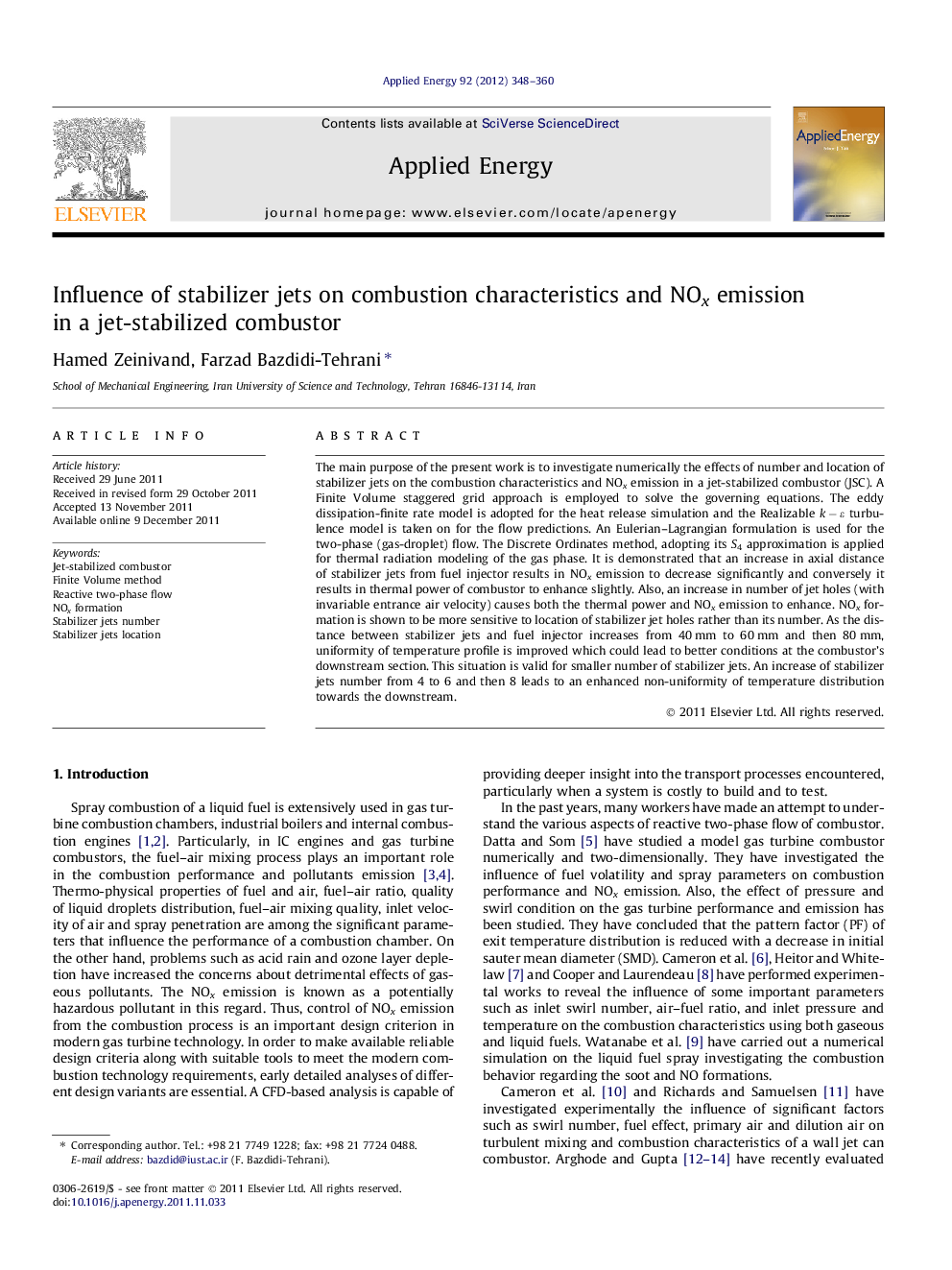| Article ID | Journal | Published Year | Pages | File Type |
|---|---|---|---|---|
| 243612 | Applied Energy | 2012 | 13 Pages |
The main purpose of the present work is to investigate numerically the effects of number and location of stabilizer jets on the combustion characteristics and NOx emission in a jet-stabilized combustor (JSC). A Finite Volume staggered grid approach is employed to solve the governing equations. The eddy dissipation-finite rate model is adopted for the heat release simulation and the Realizable k − ɛ turbulence model is taken on for the flow predictions. An Eulerian–Lagrangian formulation is used for the two-phase (gas-droplet) flow. The Discrete Ordinates method, adopting its S4 approximation is applied for thermal radiation modeling of the gas phase. It is demonstrated that an increase in axial distance of stabilizer jets from fuel injector results in NOx emission to decrease significantly and conversely it results in thermal power of combustor to enhance slightly. Also, an increase in number of jet holes (with invariable entrance air velocity) causes both the thermal power and NOx emission to enhance. NOx formation is shown to be more sensitive to location of stabilizer jet holes rather than its number. As the distance between stabilizer jets and fuel injector increases from 40 mm to 60 mm and then 80 mm, uniformity of temperature profile is improved which could lead to better conditions at the combustor’s downstream section. This situation is valid for smaller number of stabilizer jets. An increase of stabilizer jets number from 4 to 6 and then 8 leads to an enhanced non-uniformity of temperature distribution towards the downstream.
► Influence of stabilizer jets number and location in a combustor is studied. ► Numerical simulation shows reasonable agreement with experiments. ► Increase of stabilizer jets number leads to increase of temperature and NO formation. ► Uniformity of temperature profiles decreases with increase of stabilizer jets number. ► With increase of distance between stabilizer jets and injector NO emission decreases.
